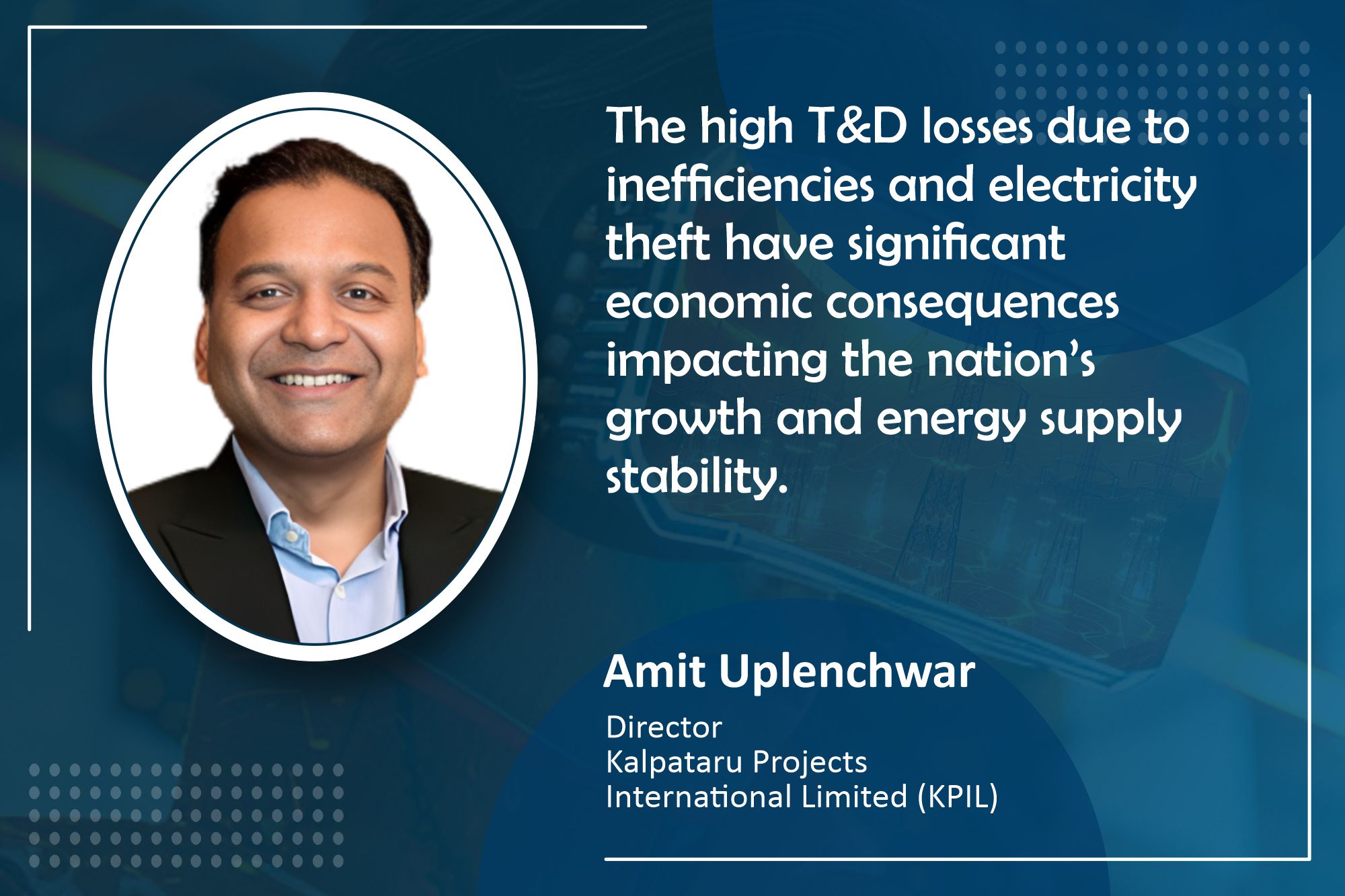Real-time monitoring technologies enhance grid efficiency
By EPR Magazine Editorial March 4, 2025 11:43 am IST
By EPR Magazine Editorial March 4, 2025 11:43 am IST

Private companies and technology suppliers can modernise the infrastructure by introducing smart meters, automated grid management systems, and real-time monitoring technologies. This will reduce losses, enhance fault detection, and improve the grid’s efficiency and stability overall.
Through technology and investment, private sector involvement in the Transmission and Distribution (T&D) sector can modernise the grid, enhance reliability, and reduce losses. Amit Uplenchwar from Kalpataru shares more insights into the emerging privatisation scenario.
How can private sector participation modernise Indian T&D infrastructure to reduce losses and improve reliability?
The private sector plays a crucial role in modernising India’s Transmission and Distribution (T&D) infrastructure, especially when it comes to reducing technical losses and enhancing the reliability of electricity distribution. The high T&D losses due to inefficiencies and electricity theft have significant economic consequences, impacting the nation’s growth and energy supply stability. In this context, private sector participation can bring substantial improvements through technology and innovation. Private companies and technology suppliers can do this by bringing in smart meters, automated grid management systems, and real-time monitoring technologies, thus reducing losses, enhancing fault detection, and improving the efficiency and stability of the grid overall.
Many Indian T&D systems are outdated, prone to failures, and unable to meet the growing electricity demand. The government and private investors can partner in public-private partnerships (PPPs) to share the risks of large infrastructure projects, ensuring that necessary upgrades to the T&D infrastructure are made with adequate capital and expertise. Financial institutions and investors in the private sector can provide the necessary capital to develop new substations, transformers and other critical infrastructure. Operational excellence by private sector entities and consulting firms can help best practices in managing T&D networks by improving grid reliability, reducing losses and ensuring a smooth flow of electricity from production to consumption.
How can the government align private sector investment in T&D with public interest and rural development?Balancing the need for private sector investment in Transmission and Distribution (T&D) infrastructure by ensuring that critical infrastructure improvements are made in underserved and rural areas requires a strategic approach from the government. While privatisation in T&D can help overcome challenges like inefficiencies, financial burdens and outdated technology, the government must implement policies aligning private sector goals with public interests. A clear regulatory framework is essential for efficient service delivery and performance standards. Incentives for R&D can drive innovation in the private sector. Loan and revenue guarantees can support rural electrification. Public-Private Partnerships (PPPs) can help modernise infrastructure. Smart grids and renewable energy can bridge energy gaps in remote areas. Fair and transparent electricity pricing ensures affordability. Government oversight can ensure privatisation leads to a reliable, inclusive and resilient T&D system. Sustainability and long-term reliability must be key priorities.
How can feeder separation improve Indian T&D efficiency and reduce losses?
Feeder separation in the T&D sector involves allocating dedicated electricity feeders for agricultural and non-agricultural consumers. This improves load management, reduces power losses and enhances voltage stability, especially in rural areas. Key benefits include minimising electricity theft by better monitoring unauthorised consumption and enabling efficient load management by shifting agricultural use to off-peak hours. It enhances reliability for domestic and industrial consumers while boosting rural industries by ensuring a stable power supply. Additionally, farmers benefit from dedicated irrigation power, improving agricultural productivity. Implementing feeder separation strengthens India’s power distribution network, ensuring sustainability and supporting economic growth in rural areas.
We use cookies to personalize your experience. By continuing to visit this website you agree to our Terms & Conditions, Privacy Policy and Cookie Policy.